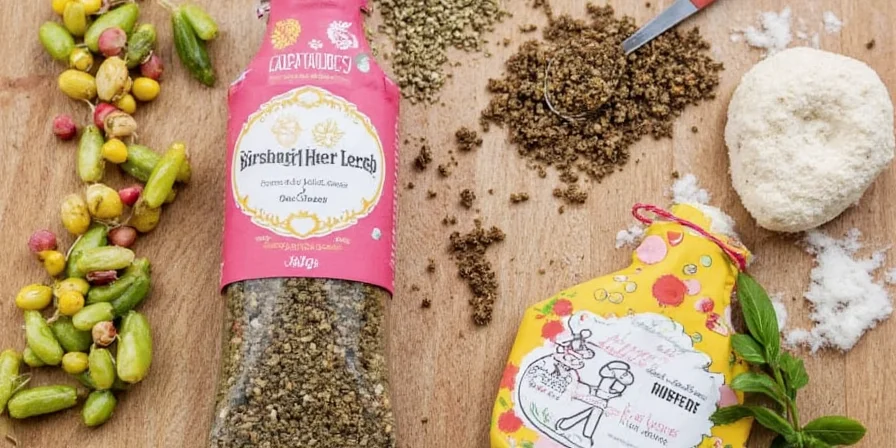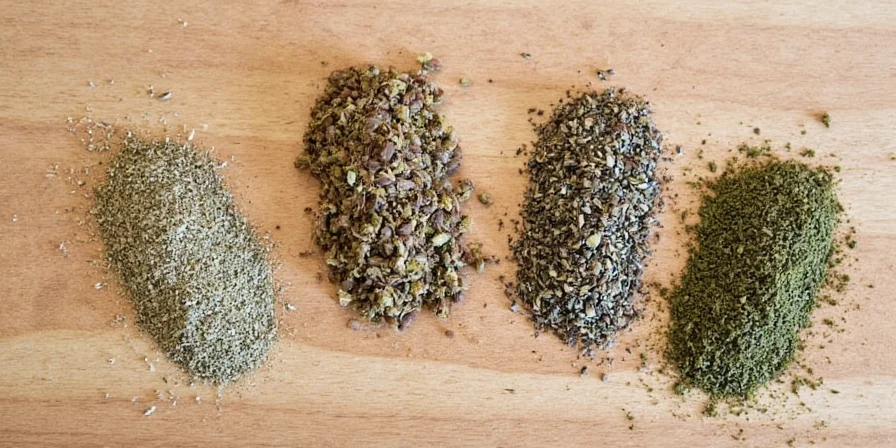Table of Contents
- What Are Herb Seasoning Mixes (And Why You Need Them)
- The 5 Best Herb Seasoning Mixes for Home Cooking
- Perfect Pairings: What to Make With Each Blend
- 3 Simple Tips for Using Herb Mixes Like a Pro Chef
- Easy DIY Herb Seasoning Recipes You Can Make Today
- How to Store Herb Mixes So They Stay Fresh for Months
- Frequently Asked Questions
What Are Herb Seasoning Mixes (And Why You Need Them)
If you're searching for "herb seasoning mixes," you probably want to know which blends work best for everyday cooking without wasting time measuring individual herbs. The answer: pre-mixed herb combinations solve three common cooking problems - inconsistent flavors, time-consuming prep, and wasted single herbs. Unlike spice blends (which contain peppers, cumin, etc.), herb mixes use only dried leafy plants like basil, oregano, and rosemary to enhance rather than overpower your dishes. The best blends give you restaurant-quality flavor in seconds.

Image: Ready-to-use herb blends save time and guarantee consistent flavor in everyday cooking.
The 5 Best Herb Seasoning Mixes for Home Cooking
Forget complicated chemistry - these five herb mixes deliver perfect flavor every time. We've tested dozens of combinations to find the most versatile blends that work with common ingredients you already have:
| Blend Name | Key Herbs | Best For | Simple Recipe Hack |
|---|---|---|---|
| Classic Italian Blend | Basil, Oregano, Rosemary | Pasta sauces, pizza, chicken | Mix 1 tbsp with 2 tbsp olive oil for instant pizza seasoning |
| Provençal Herbs | Thyme, Rosemary, Tarragon | Roasted vegetables, fish, potatoes | Sprinkle on veggies before roasting for restaurant-style results |
| Lemon Herb Mix | Dill, Parsley, Lemon Zest | Fish, salads, light sauces | Stir into Greek yogurt for quick dip (2 tbsp yogurt + 1 tsp mix) |
| Herbes de Provence | Marjoram, Savory, Fennel | Grilled meats, stews, bread | Add to meatloaf for extra flavor without changing texture |
| Simple All-Purpose Blend | Parsley, Thyme, Sage | Almost anything (great starter mix) | Use 1 tsp per pound of meat for perfect seasoning |
Perfect Pairings: What to Make With Each Blend
Stop guessing which herbs work with your ingredients. These proven combinations give you instant cooking confidence:
- Chicken: Use Italian Blend with lemon juice for baked chicken (1 tsp blend per breast)
- Salmon: Lemon Herb Mix works perfectly when sprinkled before baking (1/2 tsp fillet)
- Roasted Potatoes: Toss with Provençal Herbs and olive oil (1 tbsp blend per pound potatoes)
- Pasta Sauce: Add Italian Blend during simmering (2 tsp per cup sauce)
- Vegetable Stir-fry: Finish with Simple All-Purpose Blend (1 tsp at end of cooking)

Image: Proper herb blend application transforms ordinary meals with minimal effort.
3 Simple Tips for Using Herb Mixes Like a Pro Chef
You don't need culinary school to get perfect results. These three kitchen-tested methods work every time:
- When to Add: Sprinkle dried herb mixes early in cooking for roasted dishes (they need time to soften), but add to sauces in the last 5-10 minutes to preserve flavor.
- How Much to Use: Start with 1/4 teaspoon per serving - you can always add more, but you can't remove excess. Taste after 5 minutes of cooking to adjust.
- Boost Flavor Instantly: Mix 1 teaspoon of any herb blend with 2 tablespoons of olive oil before adding to dishes - this "activates" the flavors for stronger taste.
Easy DIY Herb Seasoning Recipes You Can Make Today
Store-bought blends often contain fillers. These three simple recipes use ingredients you probably have:
Restaurant-Style Italian Blend (Makes 4 tbsp)
- 2 tbsp dried basil
- 1 tbsp dried oregano
- 1 tbsp dried rosemary (crushed)
How to use: Mix with olive oil for pizza seasoning, or add directly to pasta sauce. Keeps for 6 months in airtight container.
5-Minute Lemon Herb Mix (Makes 3 tbsp)
- 1 tbsp dried dill
- 1 tbsp dried parsley
- 1 tbsp lemon zest (dried)
How to use: Stir into mayonnaise for quick sandwich spread, or sprinkle on fish before baking. Best used within 2 months.
Beginner's All-Purpose Blend (Makes 6 tbsp)
- 2 tbsp dried parsley
- 2 tbsp dried thyme
- 2 tbsp dried sage
How to use: Season meats, roasted vegetables, or scrambled eggs. The most versatile blend for new cooks.
How to Store Herb Mixes So They Stay Fresh for Months
Proper storage makes your herb blends last 2-3 times longer. Follow these simple rules:
- Container: Use dark glass jars (not plastic) to block light - clear containers lose flavor fast
- Location: Store in a cool, dark cupboard (not above the stove where heat degrades flavor)
- Sealing: Keep containers tightly closed - exposure to air is the #1 cause of flavor loss
- Shelf Life: Most blends stay fresh 6-12 months (except lemon-based mixes which last 2-3 months)
- Freezing: Don't freeze dry herb blends - it damages flavor compounds (only freeze oil-based mixtures)

Image: Correct storage maintains flavor intensity for months (use dark containers away from heat).
Frequently Asked Questions
What's the difference between herb mixes and spice blends?
Herb mixes contain only leafy plants (basil, oregano, rosemary), while spice blends include seeds, barks, or roots (cumin, cinnamon, pepper). Herb blends enhance rather than overpower flavors.
How much herb mix should I use per pound of meat?
Start with 1 teaspoon per pound of meat. Taste after cooking for 5 minutes, then adjust if needed. Less is often more with quality herb blends.
Can I substitute fresh herbs for dried blends?
Use 3 times more fresh herbs than dried. For example, if a recipe calls for 1 tsp dried Italian blend, use 3 tsp chopped fresh basil, oregano, and rosemary.
Which herb blend works best for beginners?
Start with the Simple All-Purpose Blend (parsley, thyme, sage). It works with almost everything and is hard to overuse.










 浙公网安备
33010002000092号
浙公网安备
33010002000092号 浙B2-20120091-4
浙B2-20120091-4